Yes, part two part two—the day was long, as most days having a beginning and an end are.
As I mentioned in the last post, as the Charles W. Morgan broke free from the river bottom the steamboat Sabino turned around and headed back towards Mystic Seaport. Being aboard the Sabino, I had to go back as well. Having traveled along the coast on I-95 for years I knew that New London was not that far from Mystic, but what course would the Morgan travel in Long Island Sound and how long would it take? We had no control over the speed of the Sabino, nor did the three of us aboard know if our peers were still anywhere near the seaport. I assumed they had headed down the coast already. We thanked our captain and hosts and hopped into the car to catch whatever it was we could as the Morgan sailed into New London.
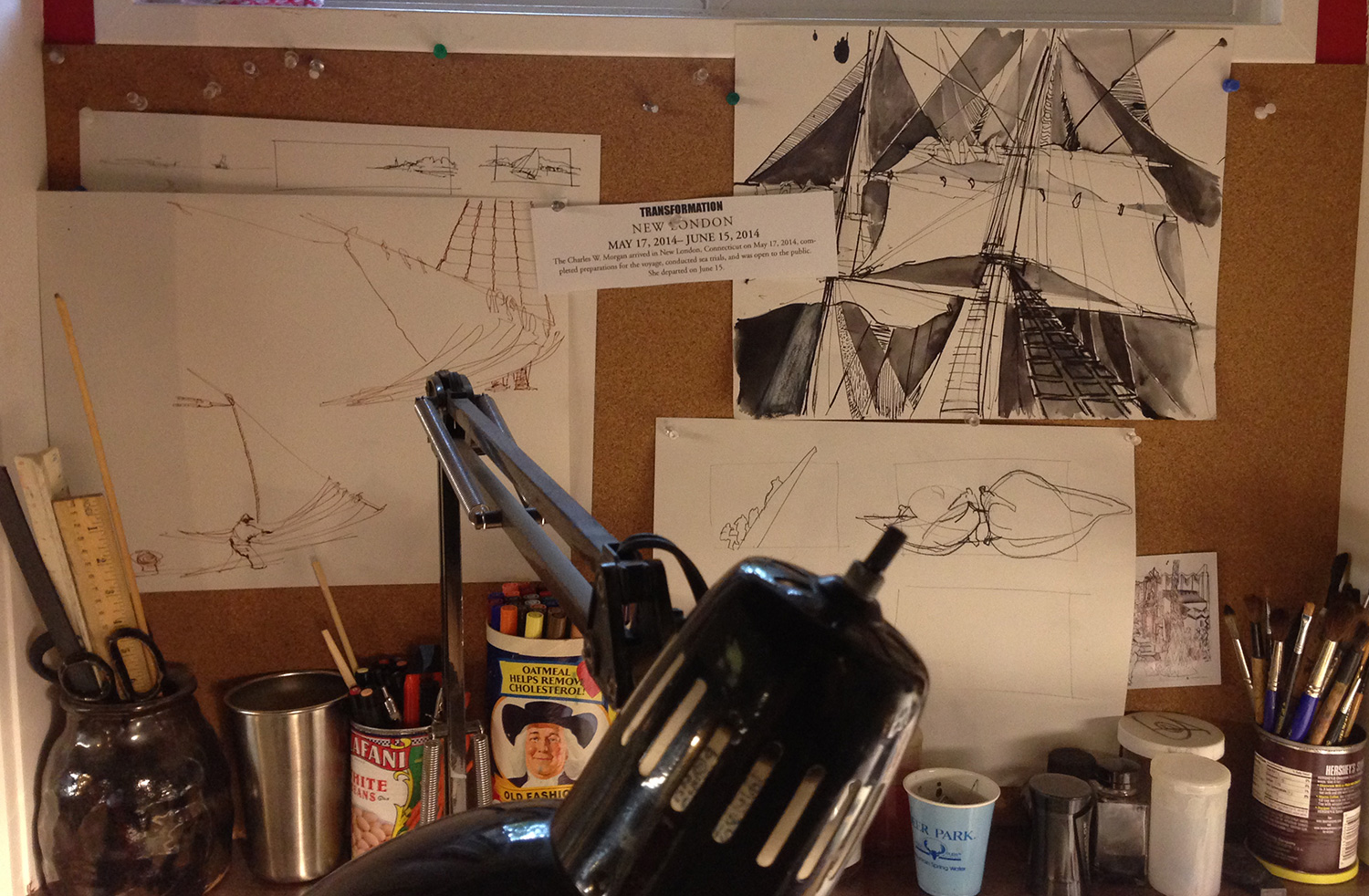
Within about a half an hour we were driving east toward the docks in New London only to turn the corner and see the Charles W. Morgan drifting majestically into the harbor. We parked and headed over to the dock to learn that we were in fact the only ones there. The first stop of the voyage was a success. For the next month the Morgan would find home in New London as she was fitted for sea and her 38th voyage. Ballast would be loaded—something that was impossible before leaving the Mystic River—rigging would be fit and trials runs would take place. This is where she went from relic of an industrial past to living history and the voice of new era.
Before she would travel up the Atlantic, the crew tested the ship on open waters. We were there the day her sails were open for the first time. Having watched her be restored for several years, I can only imagine what the crew and restoration team felt when she saw her sails fill with wind and glide across the water. I grew up having been afraid of boats—the Morgan being one of them. My knees would buckle at the first tremor of water as I walked the plank to board. Decades later, drawing from a boat riding along side her, I realized what pulled men to the sea in search for new adventure and I watched as dozens of the crew worked in harmony to make this twisted web of ropes and sails work in unison. There was beauty in ever wave and wake around her.
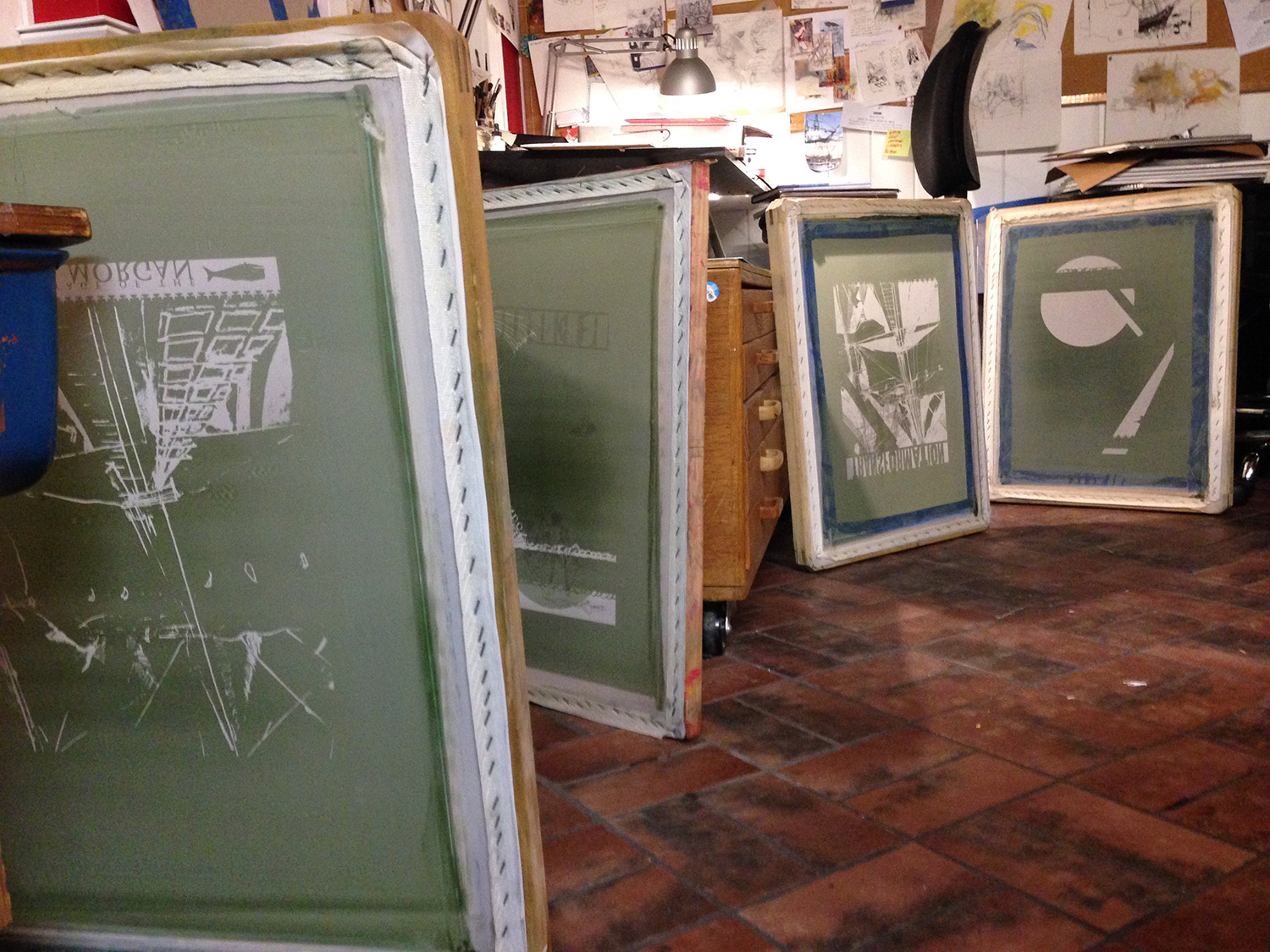
Fast forward a little over a year later and I found myself in the studio looking back on all the moments that made the voyage what it was. This “transformation” that the ship took, from museum piece to sailing vessel, was no small feat. While New London has a long history of its own, its role in this voyage was distinct. It is here the Morgan tested her seaworthiness. She passed on all accounts. As she was wrapped with sails and lined with ropes for the first time in many years, her true form took shape.
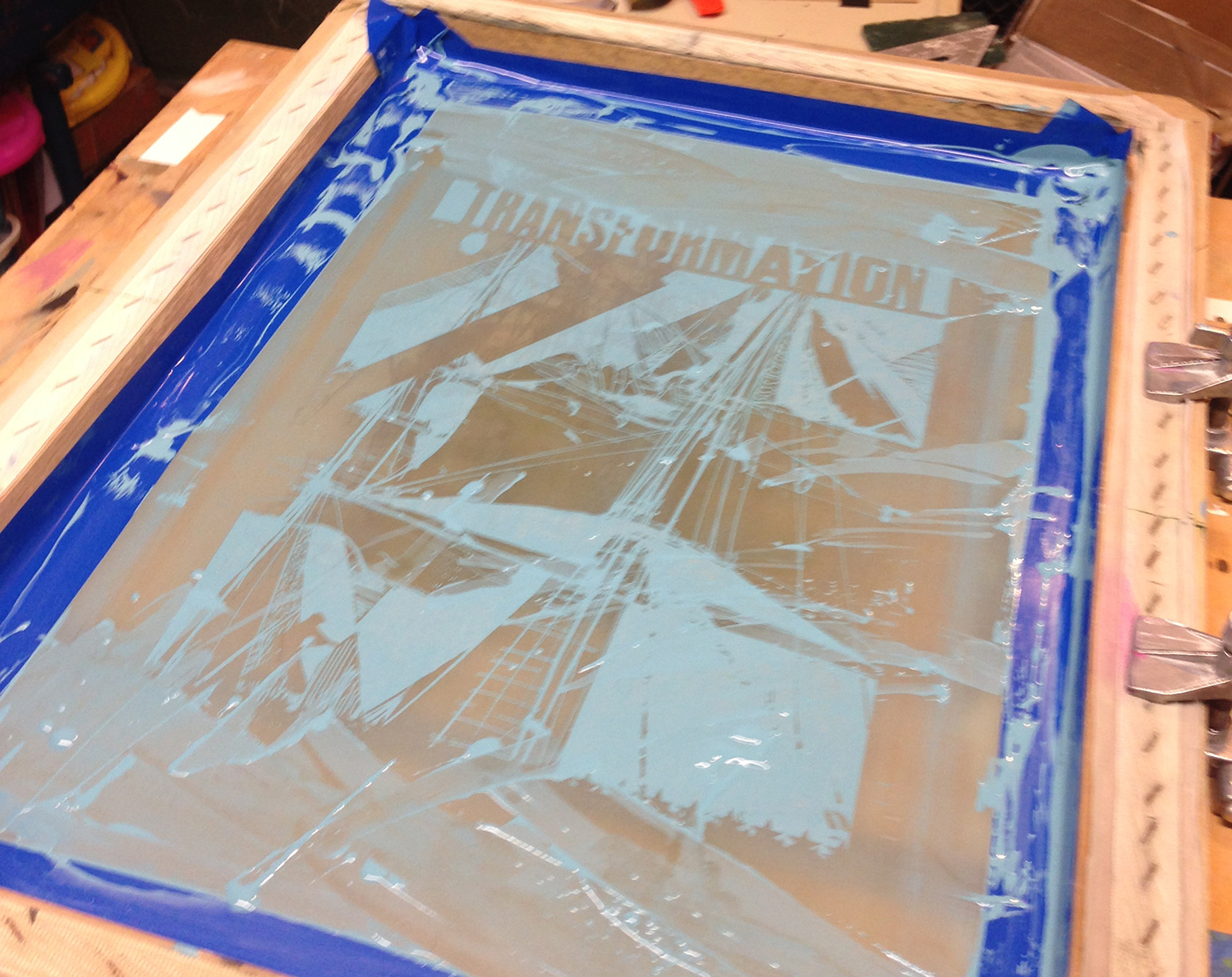
The screen wet from the blue ink. Having reevaluated the shapes and graphics I would use due to the coarseness of the canvas I was printing on, rather than planning halftones that I found I could not hold in the grain of the fabric, I was hoping for some imperfections as the prints were pulled.
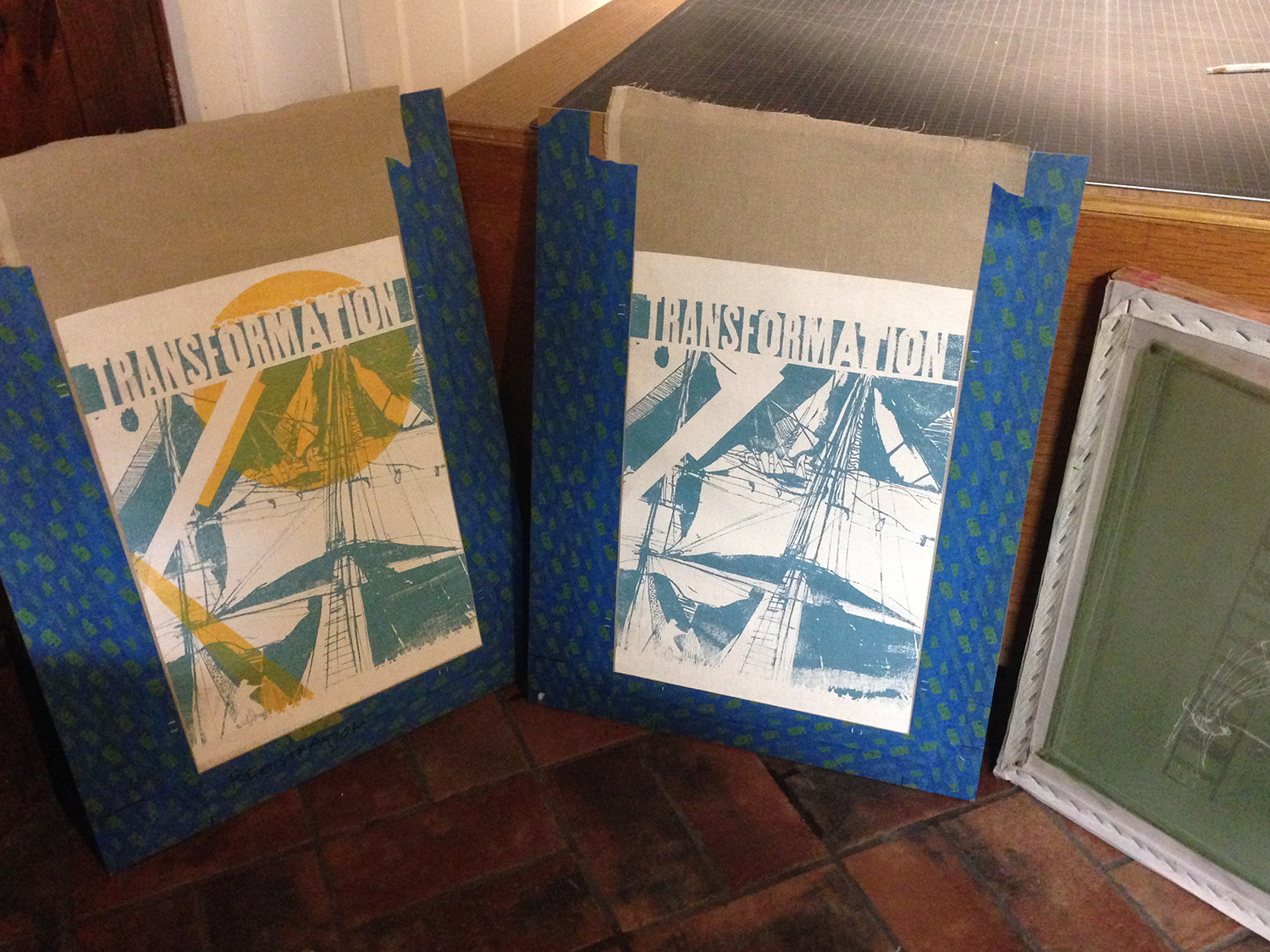
The first canvas of three gets the yellow ink. I played with opacity and ink extender. There was something fun about not knowing how it would all turn out simply because I switched from paper to a canvas I had never used.
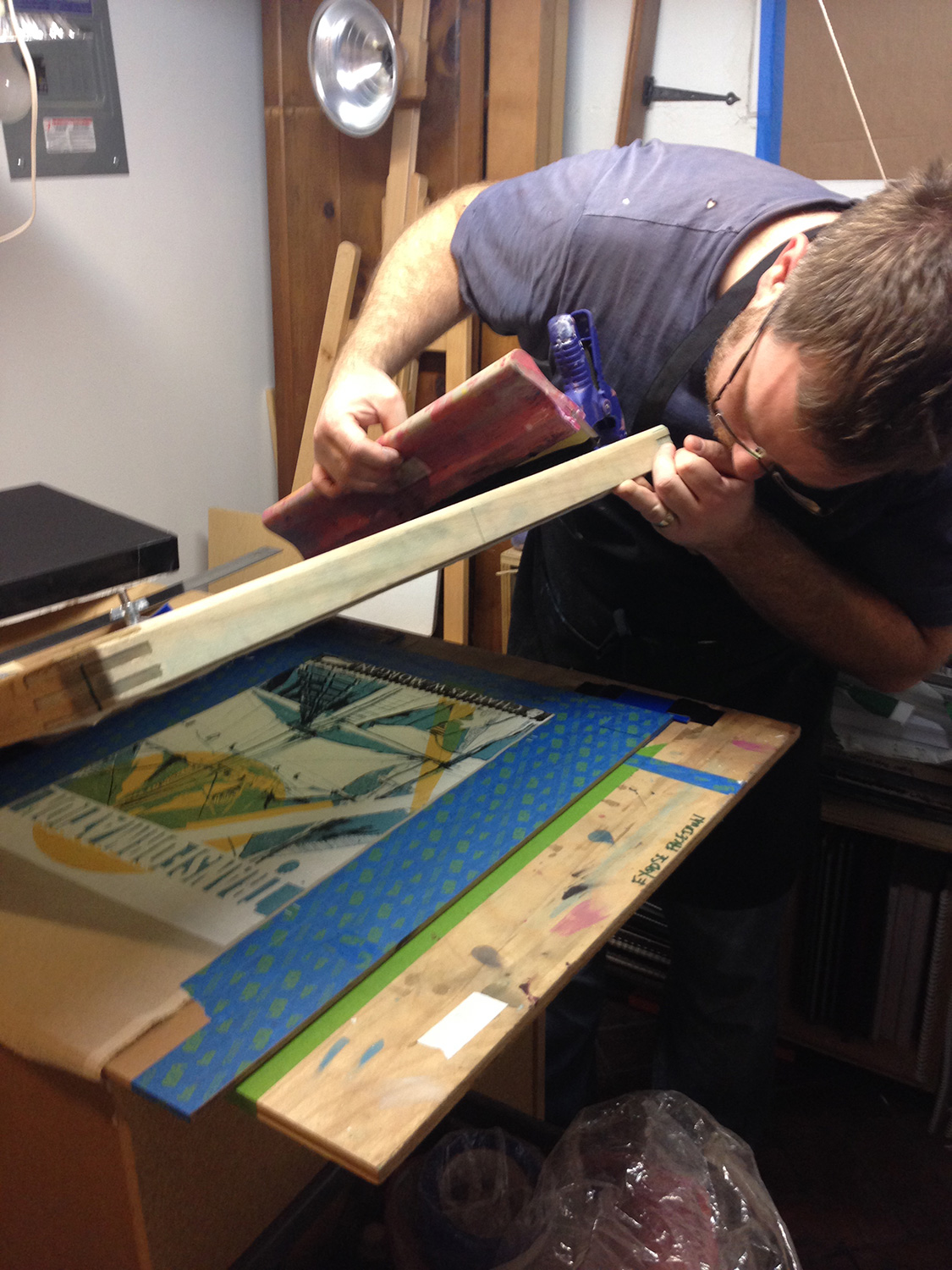
Inspecting the black ink. With one more color to go the image starts to take shape.
The Journey of Transformation show is currently on display at Mystic Seaport through the end of November. Seven banners representing moments in the voyage hang in the Mallory Gallery. This is the second show for the The Dalvero Academy documenting the restoration of the Charles W. Morgan. In 2012 Restoring a Past Charting the Future was on display.
